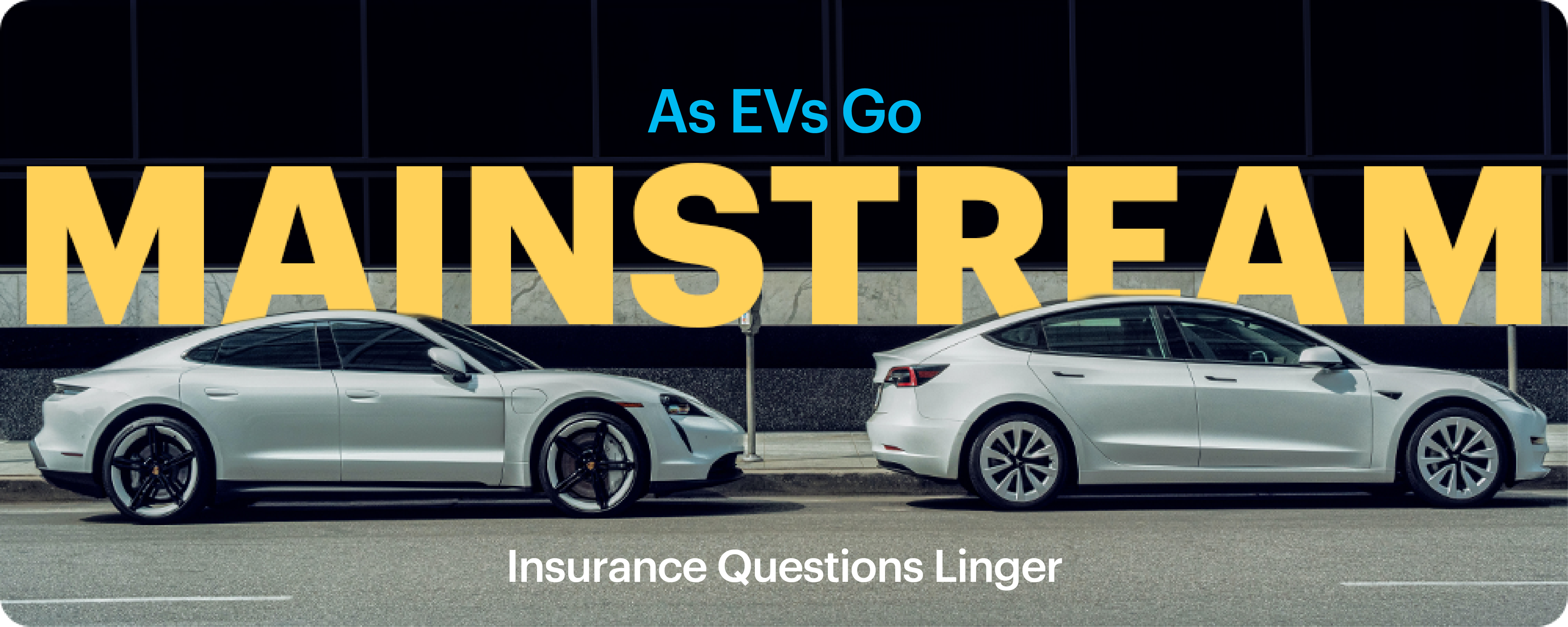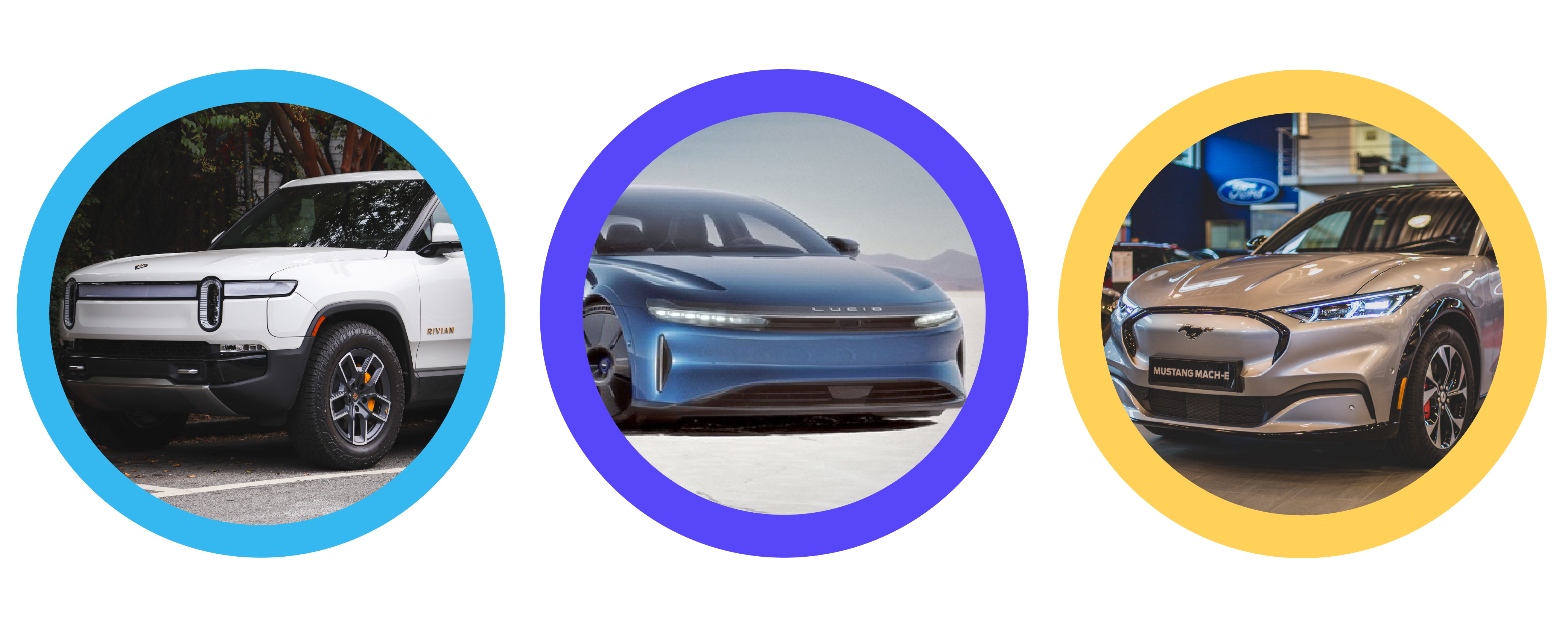
Despite recent headlines (Wall Street Journal and NY Times), about the electric vehicle (EV) market slowing down, it would be hard not to believe it’s a bump in the road caused by high interest rates and total cost of ownership. Even with demand slowing in the near term (i.e. the next few years), Bloomberg has gone so far as to predict the EV market will surge to EV $57 Trillion by 2050, effectively dominating the automotive market.
In short, the EV market is here for the long run. While still struggling to gain ground in the US, EVs crossed a major global threshold for adoption in 2022 when they accounted for 10% of global vehicle sales. Advancements in infrastructure, tech, regulation, and marketing have converged over the last few years to drive the upswing. From increased range and improved charging networks to government incentives and reduced prices, to, well, Elon… EVs are on a path to become downright conventional.

And while there’s little argument that it was Tesla that took acceptance of EVs mainstream in the US; they’re also accelerating cost parity with ICE vehicles through deep price cuts and advanced charging infrastructure.
Their rapid chargers are quickly becoming the industry standard. Of course, they’re not alone in the field anymore, not by a longshot. In recent years, new OEM entrants like Rivian and Lucid to the Detroit Big Three have all stepped in the ring to help fast-forward our EV future.

As MarketWatch recently put it, “We’re officially living in the age of the electric vehicle (EV). Global sales of EVs surpassed 10 million in 2022, and the International Energy Agency (IEA) projects this figure to nearly quadruple by 2030.
In the U.S. alone, there are currently 3 million EVs on the road and more than 130,000 public charging stations — and those numbers will continue to grow.”
So, maybe you’re thinking about joining the EV crowd. You’re onboard with the environmental arguments or just love the advanced tech, or perhaps you want to be that house on the block with the newest coolest toy.
All good! Before you purchase your EV, however, there are a couple of unique considerations, chief among them is insurance.
Could EVs Cost You More to Insure?
While EVs could save you a ton of money on repairs and gas, you could find yourself in a dilemma when it comes to EV insurance. Contrary to what you might expect, it often costs more to insure an electric car than a traditional gasoline-powered vehicle.
Several risk factors make EVs more expensive to insure. Key among them, EVs generally have more expensive and complex components when compared to ICE vehicles. The battery systems, in particular, are costly to repair or replace. What’s more, the lack of qualified mechanics capable of handling EV-specific issues can drive up repair costs, which impacts your insurance premiums.
As Animesh Das, chief underwriting officer, ACKO recently noted to Business Insider India, “Electric vehicles are built with advanced technology that is expensive. ‘Furthermore, the EVs' lightweight and instant torque make them vulnerable to extensive damage. This increases the insurer's liability, resulting in higher insurance policy costs.’”
Second, electric vehicle insurance can be more expensive because of drivers want more coverage. Some owners may choose specific add-ons such as coverage for the charging cable and the battery due to their high replacement costs.
Third, because these cars are relatively new on the roads, insurers have adopted a more cautious approach by charging higher premiums, according to Consumer Reports. But it’s not all doom and gloom, Consumer Reports also notes that “prices are likely to come down as insurance companies gather more data on repair costs and EVs become more popular.”
Could EVs Cost You Less to Insure?
Probably not, but as EVs become more mainstream, the insurance landscape will change. The more data and familiarity with the electric vehicle market, the more insurers will be able to adapt rates and offer potential savings. Additionally, as conventional vehicles continue to adopt more advanced technology with ADAS, bumper sensors, and more, the cost disparity between electric and conventional car insurance costs will likely converge.
How Can Consumers Reduce Insurance Costs?
NerdWallet “found that the national median rate for a 2023 Tesla Model 3 was $2,574 per year for full coverage insurance. That’s almost 45% higher than the national median cost of car insurance.”
To mitigate high insurance costs, electric car owners can take several conventional steps. Opting for a higher insurance deductible, for one, could reduce monthly premiums. However, this means accepting a higher out-of-pocket cost if you have an accident.
Enhancing vehicle security can help as well. Advanced security systems, such as immobilizers or tracking devices, reduce the risk of theft. And with many EVs, this security comes preinstalled. Insurance companies recognize these reduced risks and many offer lower premiums if you have them.
In addition, certain insurers even offer specific discounts for electric vehicles, recognizing the lower operational risks and improved safety features. They might provide discounts for low mileage, which is common among electric cars due to their range limitations. Undertaking advanced driving courses or agreeing to let the carrier monitor your driving can also positively impact insurance costs.
Always shop around before settling on an insurer. Some carriers even specialize in electric vehicles and may offer more competitive rates than other insurers. Their data and insights could provide more tailored products and services. And you should always consider any discounts not specific to EVs as well, such as multi-policy discounts (bundling), or affinity discounts, all of which can lead to significant savings.
Finally, while the cost to insure EVs is a big consideration, it’s important to keep in mind that EVs tend to have lower maintenance and repair expenses over time compared to their gasoline-powered counterparts. In addition, the cost of 'fueling'— i.e., charging an electric car—is generally lower than the cost of filling up with gasoline. As the adoption of EVs continues to rise, economies of scale are expected to reduce manufacturing costs, which should lead to greater affordability as well.
While electric vehicles may generally be more expensive to insure, the market is continuously evolving. The growing prevalence of EVs, increased data on their performance and risks, and more repair shops capable of handling them are likely to influence insurance costs positively in the future. For now, consumers can employ various strategies to lower their premiums and should shop around to find the best possible deal.